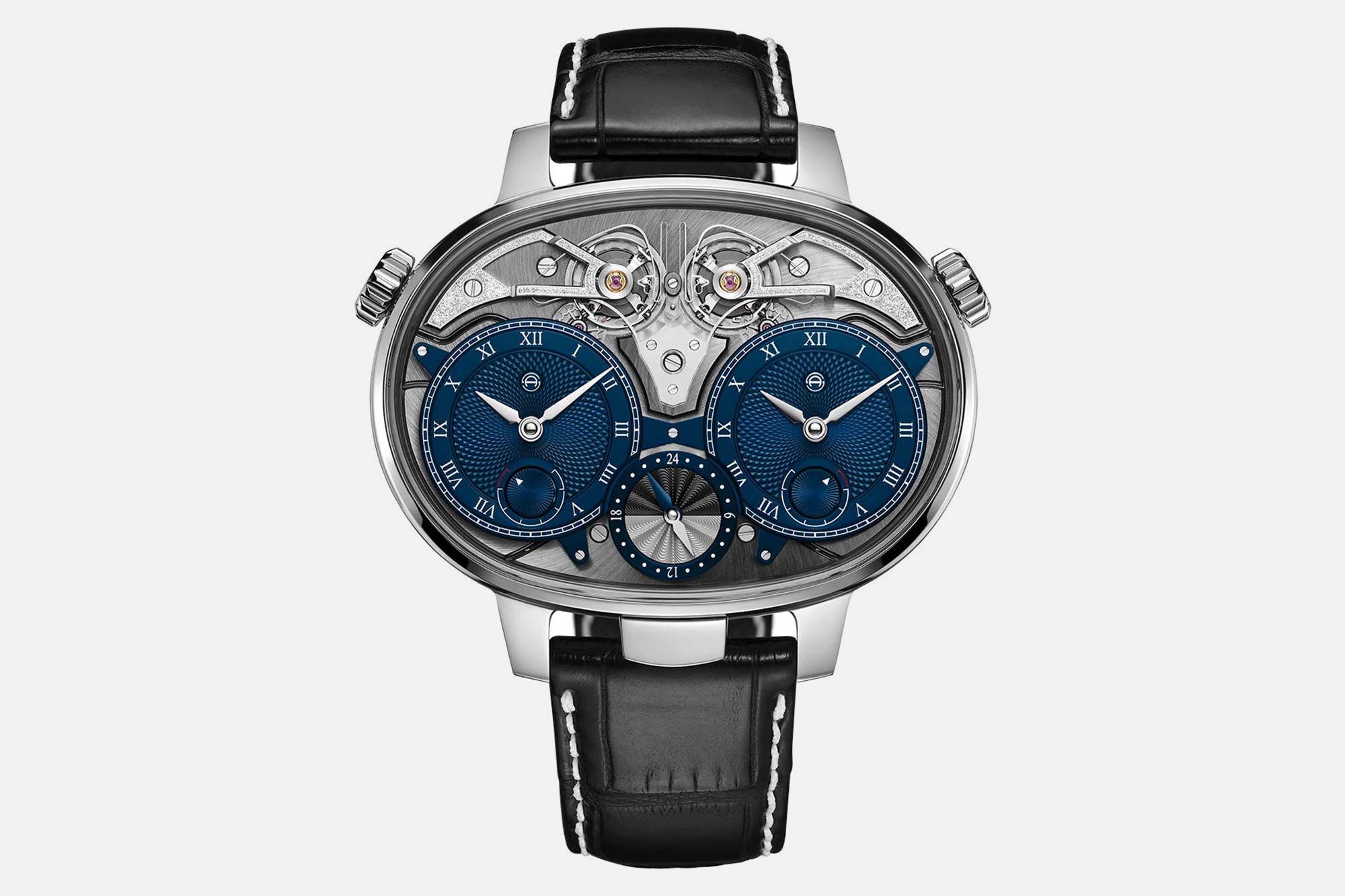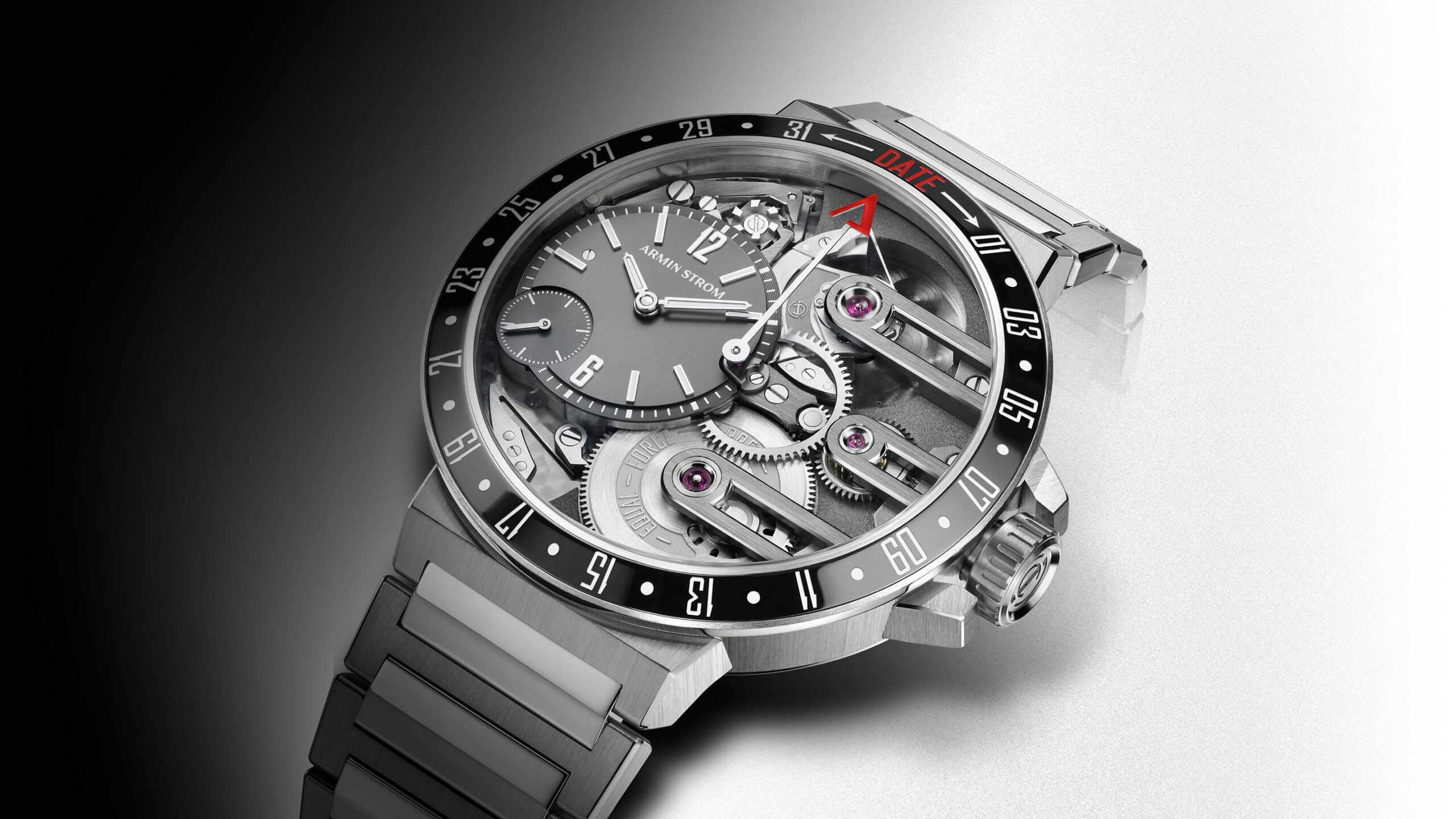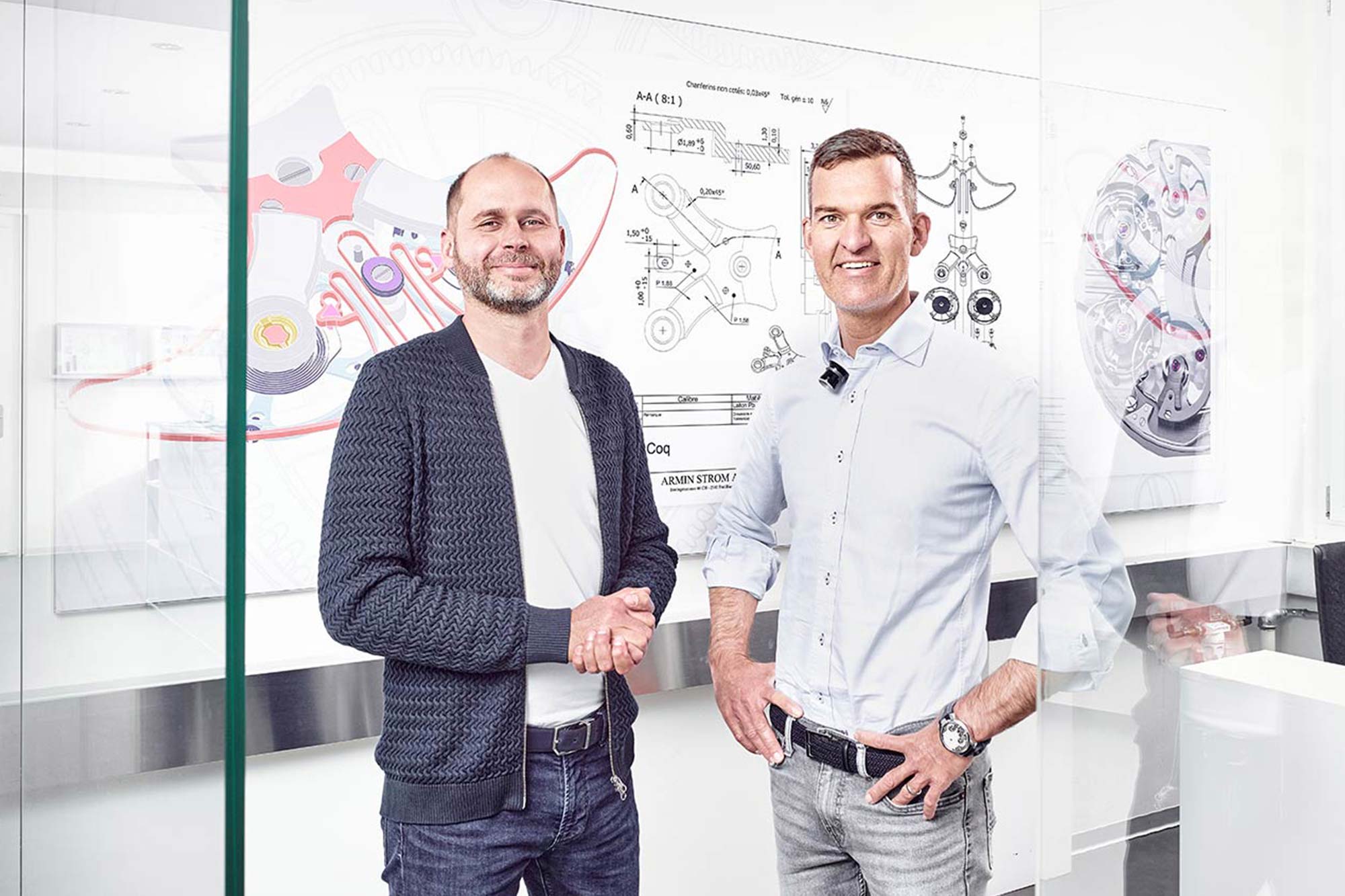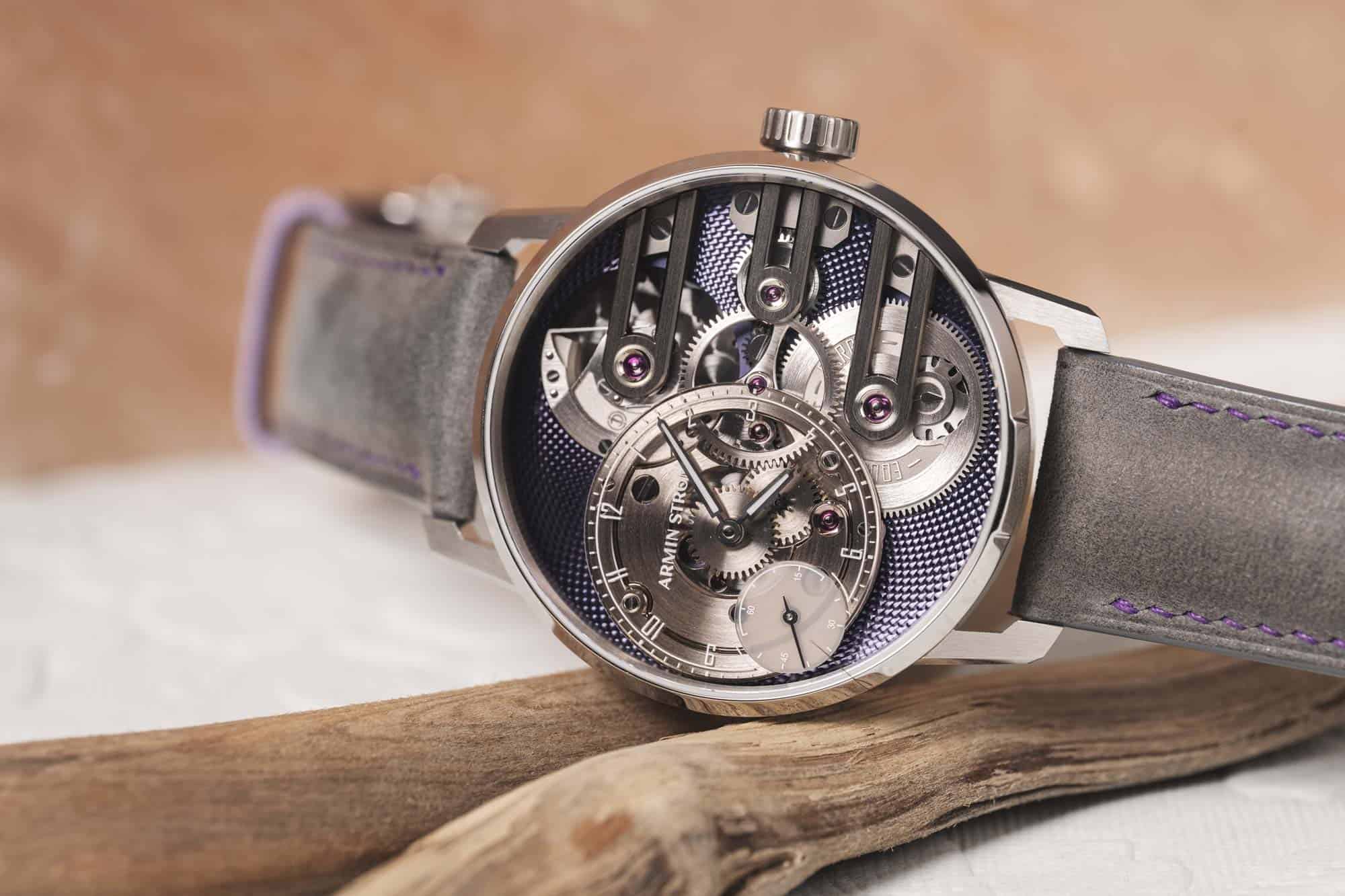
With the incredible wealth of creative independent brands producing watches these days, what does it take to really rise above the din in 2024? The answer to that question looks a little different for everyone, but broadly speaking, it boils down to mystique. It’s an incredibly difficult thing to define, but for fans of highly technical watchmaking and movement innovation, few brands have infused their designs with the type of hyper-potent mystique and creativity that Armin Strom has since its revitalization in 2009.
The proudly Swiss-German brand’s sense of imagination, groundbreaking movement designs, top-tier finishing, and unique aesthetic choices have earned it the distinction of being one of the great insider brands of the modern era. Armin Strom makes watches that almost any collector can appreciate, but really speak the loudest to the savvy enthusiast that goes beyond the loupe to really understand the intricacies of their inventive movements. In fact, a deeper working knowledge of how automatic movements function is almost a prerequisite to fully appreciate the virtuosity that Armin Strom’s Master Watchmaker and co-founder, Claude Greisler, has repeatedly exercised within the brand’s lines.
Innovations like Greisler’s work on the brand’s milestone Resonance collection, which harness the “resonance phenomenon” in watchmaking in a completely unique way, and their Gravity Equal Force watches, which are the first watches to utilize a constant force transmission to ensure consistent chronometric performance throughout the reserve via a wildly clever “stop-work” declutch mechanism, are undeniable triumphs of mechanical watchmaking. They’re also some of the most stunning movements being made today; magic tricks for magicians wrapped in luxe, yet functional and playful packages. These movements are also powering watches that are made entirely in-house – an impressive feat in itself.
Armin Strom’s watches don’t necessarily need additional context to enjoy, with their brilliant movements proudly showcased via the brand’s signature skeletonized dials and exhibition features, hallmarks that date back to its origins and the work of Mr. Armin Strom himself. However, there’s an additional thread of romance that laces up the brand’s backstory which shouldn’t be overlooked. It’s something that provides these impossibly technical watches with a lot of soul. In fact, it’s fair to say Armin Strom’s successful second act almost feels like an act of fate.
Greisler’s odyssey as a watchmaker and co-architect of Armin Strom’s reinvention began when he was just a boy. Greisler and childhood friend (and future Armin Strom partner/co-founder) Serge Michel used to visit Mr. Armin Strom in his workshop, which happened to be next to the Greisler family’s optometry workshop. The boys were enchanted with not only Armin Strom’s watches – with their beautiful hand-skeletonized dials – but by the man himself. The grandson of a respected watch industry family, Greisler was trained early on in the fundamentals of watchmaking by his grandmother, who he says treated stopwatches like puzzles for him as a child. Between his grandmother’s early training and the intrigue Armin Strom’s workshop (and his Jaguar E-Type) stirred in the young Geisler, he claims there was never any question that he’d become a watchmaker and nothing else. But even he probably couldn’t have imagined taking stewardship of the very watch brand that first captured his imagination. And Armin Strom himself certainly couldn’t have envisioned the new territory Greisler and Michel would blaze with his namesake brand in its second act. That pride in the brand’s success is immediately apparent when speaking to Greisler.
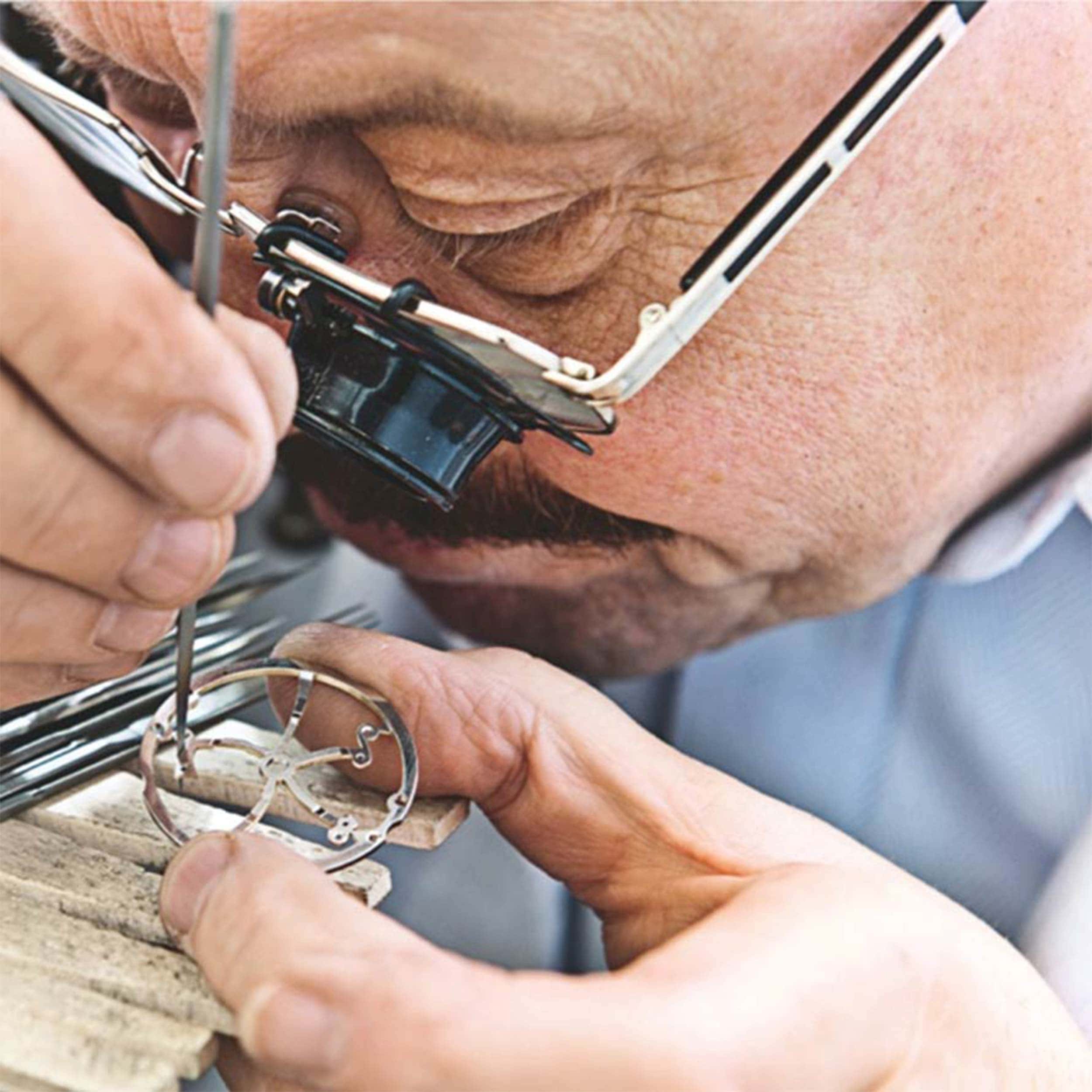
On the heels of Armin Strom’s 15th anniversary in the care of Greisler and Michel, Worn & Wound spoke with Greisler about all things Armin Strom, including his creative process, the impact his time in nature has on his watchmaking, how his relationship with old friend-turned-business partner Serge Michel has evolved, and the unexpected bridges to classic horology that have inspired some of Armin Strom’s most progressive movement designs.
Armin Strom recently celebrated 15 years since you and Serge took ownership of the brand. Looking back, what pieces represent your proudest moments in carrying on the Armin Strom name?
Definitely everything that’s based on our Resonance collection. That’s become our signature collection because it really represents what the brand stands for today. Those watches are the ideal combination of our innovation in movement development, high-end finishing, and contemporary design.
I understand that you’re very passionate about being outdoors and spend a lot of your leisure time in nature. Armin Strom’s watches and movements are so technical and innovative, I’m curious if you pull any inspiration from nature for watchmaking innovations?
I don’t think that the design inspiration really comes from doing outdoor activities exactly, but I’m more relaxed when I do them and I can start to think about watches or movements or innovative parts when I relax like that. So I wouldn’t say the inspiration comes directly from nature, but nature gives me the freedom to breathe and to really take time to think about something. If you go ski touring or you go up the mountain for seven hours, you have time to think about things. For me, my thoughts always land on movements and wondering what we could do better. How could we do things differently? When you’re running the business, there’s so much going on during the day that you can’t really sit down and be creative. That’s very difficult, and I think creativity comes when you have time and room to think about how to solve problems.
Is there a specific approach that you have for coming up with those movement innovations? Do they more often come from you trying to solve issues with movement designs from the past, or are they more abstract ideas that you want to experiment with?
As a watchmaker, I was trained with a speciality in watch restoration and I got a lot of my inspiration when I graduated watch restoration school. I love the old books and I love to go through the history of watchmaking to see what drove watchmakers back-in-the-day and examine what kinds of issues they encountered and had to solve.
I actually had a funny conversation yesterday with a collector who asked “Would you wear the Resonance to play golf?” I said ‘No, because Garmin makes watches with the purpose of playing golf that are much better for that than a Resonance.’ That’s to say there’s a different approach when it comes to high-end mechanical watchmaking these days because there’s ultimately no need for these watches anymore. However, there’s a tradition here and I try to solve problems which have existed within this tradition for many decades. Thanks to new technology, like CNC machines, and new engineering techniques that we use like 3D printing and imaging software, we can go far beyond what legendary watchmakers like Abraham-Louis Breguet were able to do. Breguet was one of the great genius watchmakers, but someone like him or George Daniels were still somewhat limited by their tools relative to the tools we have now.
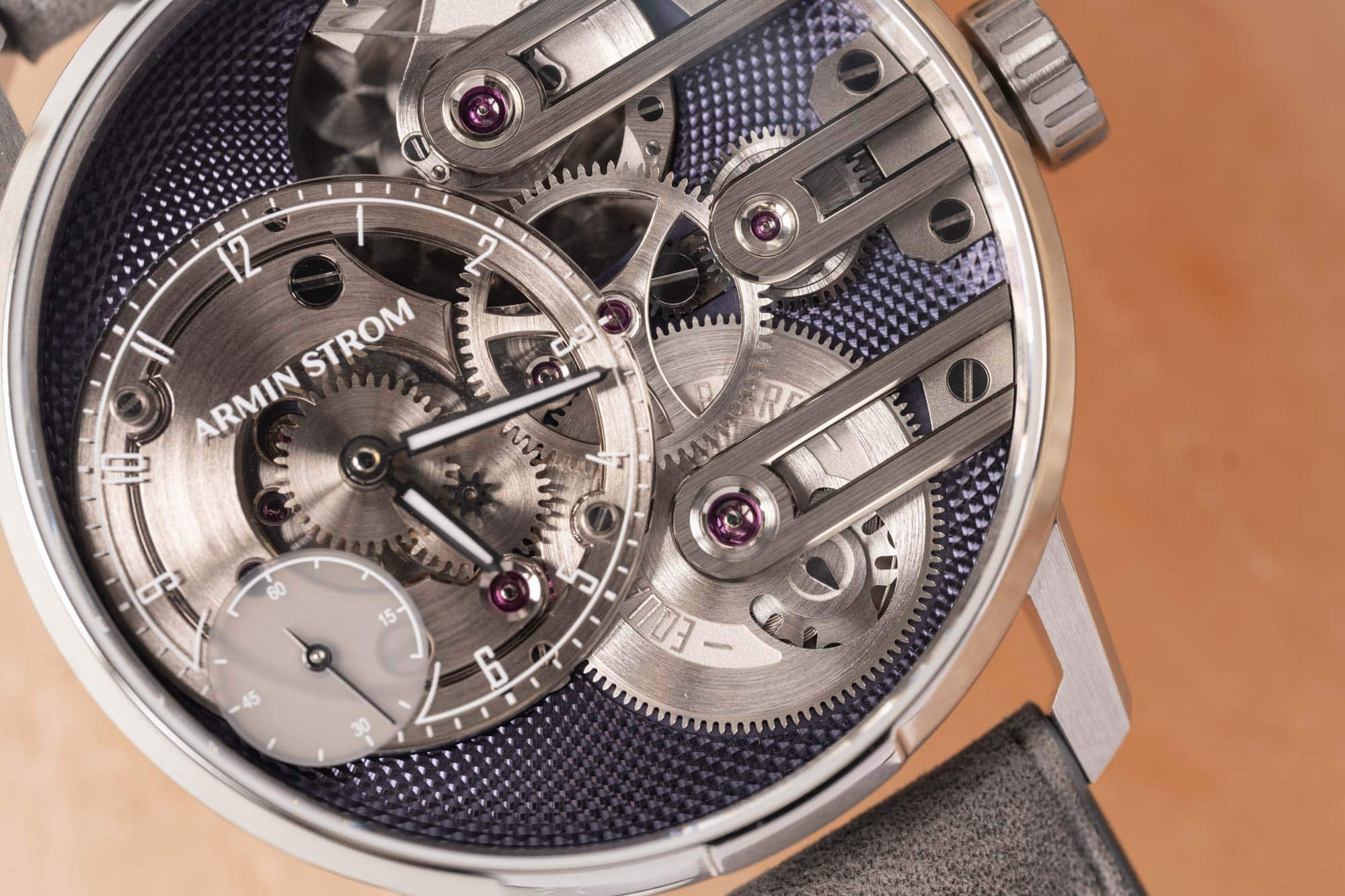
For example, if we want to do a test for a small complication, we just print it out in 3D, but maybe 10x bigger. We can see if it works much easier that way. So a big motivation for us is to figure out why and where these genius watchmakers struggled with ideas, and to figure out what the purpose of the complication they struggled with was. I love seeing if we can improve mechanical watchmaking through newer technology.
The story of you and business partner Serge Michel visiting Armin Strom’s workshop as children adds a really lovely layer of authenticity and passion to the brand’s story. Could you tell me what it was about Armin Strom’s watches that captured your imagination when you were younger, and what being in that workspace as a kid did for you?
Mr. Armin Strom had his workshop in the old town of Burgdorf, and my parents had an optician’s workshop just next to his space. So I’ve known Armin Strom for many, many years. On the other hand, my maternal grandparents were in the watch industry and started to produce stopwatches during World War II. After the war, they had their own little brand, but my grandfather eventually realized that there was an issue with the delivery of spare parts and focused on producing movement parts for other brands. So we had a company with around a hundred employees that produced wheels and pinions and screws, and all kinds of watchmaking components. My grandmother taught us when we were very young how to assemble and disassemble a stopwatch, and that was something I’d been around my entire life. My grandmother was extremely proud to be a watchmaker, and then having this great watchmaker – one who drives a car like a Jaguar E-Type – next to your parents’ workshop, you could understand how curious it made me as a child. How could this guy be so successful and achieve what he did? When we finally saw the watches he made, it had a big impact on us.
I think when you’re young, seeing skeletonized watches – with their balance wheels running and the hands moving – was extremely impressive. After that, my parents never had to ask me what I would like to become, because it was clear that I would become a watchmaker. It was never a question.

There’s a real virtuosity to Armin Strom’s watches. In the music world, if people are immersed in a skill from a very young age, they tend to develop a completely different approach to how they see their craft and they see things holistically as they get older. Would you say that’s the case for you as someone that began his watchmaking journey so young? How did you end up so far outside-the-box as a watchmaker?
Yeah, I believe so. Our approach has always been to be different and we always wanted to have a clear brand identity with our own unique vision of watchmaking. It was to combine a contemporary design – not necessarily a fancy design, but a contemporary, yet classic design – with a high-end movement in regard to its engineering. All of that, but combined with very traditional hand-finishing. For us, it was obvious from the beginning that the movement always had to be visible because we are so proud of what we do with our movements. That alone makes the watches we make unique because 95% of watch brands use plain dials, or they do a little bit of skeletonization, but their brand philosophy isn’t to have the movement showcased from both sides. That design philosophy was there for us from the very beginning, and it was clear we were not trying to copy another brand, but trying to create our own identity.
What are the challenges of making pieces that are both innovative and technically complex with a skeletonized dial, but are also aesthetically pleasing? Is there a point where a design becomes too technical and you have to draw it back?
No, because when we start creating a new watch, the movement development and the design process are done in parallel. We always start by asking “What can we do better?” and then asking whether or not there’s an advantage in showcasing what we do mechanically. Is there an added value by making it visible from the dial side, or should we hide it on the back side of the movement, etc. We’ll then adapt the design around that movement or those movement options/innovations. Most of the watch brands today have a movement supplier and then create a case style and hands around an existing movement. With Armin Strom, we do everything ourselves from the very beginning of a watch design. It’s all myself and my design partner – who is more like a sparring partner – but the designs depend so much on the function which we choose to present. For example, the Gravity Equal Force has a lot of the micro-rotor visible and the equal force barrel is visible. The bridges are very important and the bridge design is very important, and only serious watchmakers can design different bridges because they know how they have to be fixed, where you have to put the screw, the jewel, and everything necessary for them to work.
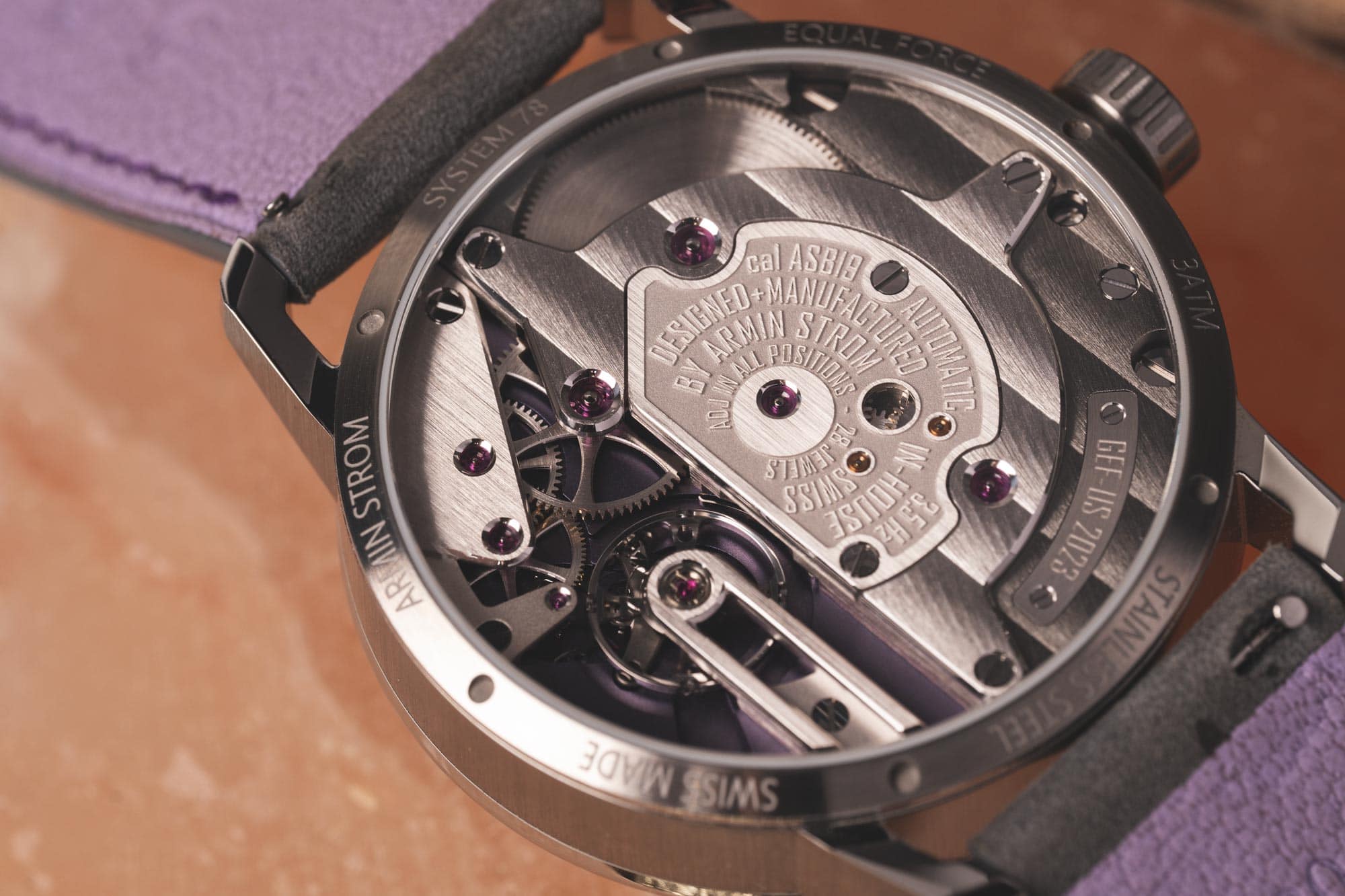
The designer I work with coaches me aesthetically, so if I do a movement or a bridge or a wheel, he’ll say something like “Yeah, it looks nice, but could we maybe do it a little bit thicker? Or a little bit thinner? Or could we change this or that?” And I go back to my computer and I start to redesign the movement until we’re both pleased with it. That’s how we work.
When you say “sparring partner,” is there an element of challenge between the two of you? How contentious a process is it to get to the final vision of a watch between the two of you?
That’s a very good question, and it’s a difficult one to answer because sometimes it happens very fast. There isn’t much of a battle typically; it’s more that we have a lot of respect for each other because I know that his skills and expertise are to make sure that the proportions are right, and he knows that from a technical perspective, he doesn’t have to try to push me in a direction where I feel uncomfortable. We’ve worked together for six years now and it’s a very respectful relationship. There isn’t a lot of conflict and we really work hand-in-hand.
Armin Strom’s watches are very playful, but never silly. I think that’s a really hard sweet spot to hit, especially in haute horology. How do you approach finding that balance? And how do you avoid repeating yourself? Is there ever something that comes to the table that’s a little too over-the-top visually that you want to draw back?
At the very beginning when we started to create the brand, we took a lot of inspiration from the famous German industrial designer Dieter Rams, who defined his 10 Principles of Good Design. We picked a few of those rules and we still try to apply them to all of our watches to this day. For example, a good design has to be honest, and “honest” in this context means we don’t create parts that don’t have a technical purpose just to make a movement look better. Another rule is good design is long living, which means we always ask ourselves how a watch might look in 10 or 15 years and really consider if a collector would still appreciate the watch, or has a design gone too far with following a trend?
Should an independent brand be able to create the trends? I would say no, because we also have to make sure that there is a certain comfort zone with our designs for our buyers, because these watches are also an investment and are priced as such. We really want to make sure that we consider all of those different angles with a design.
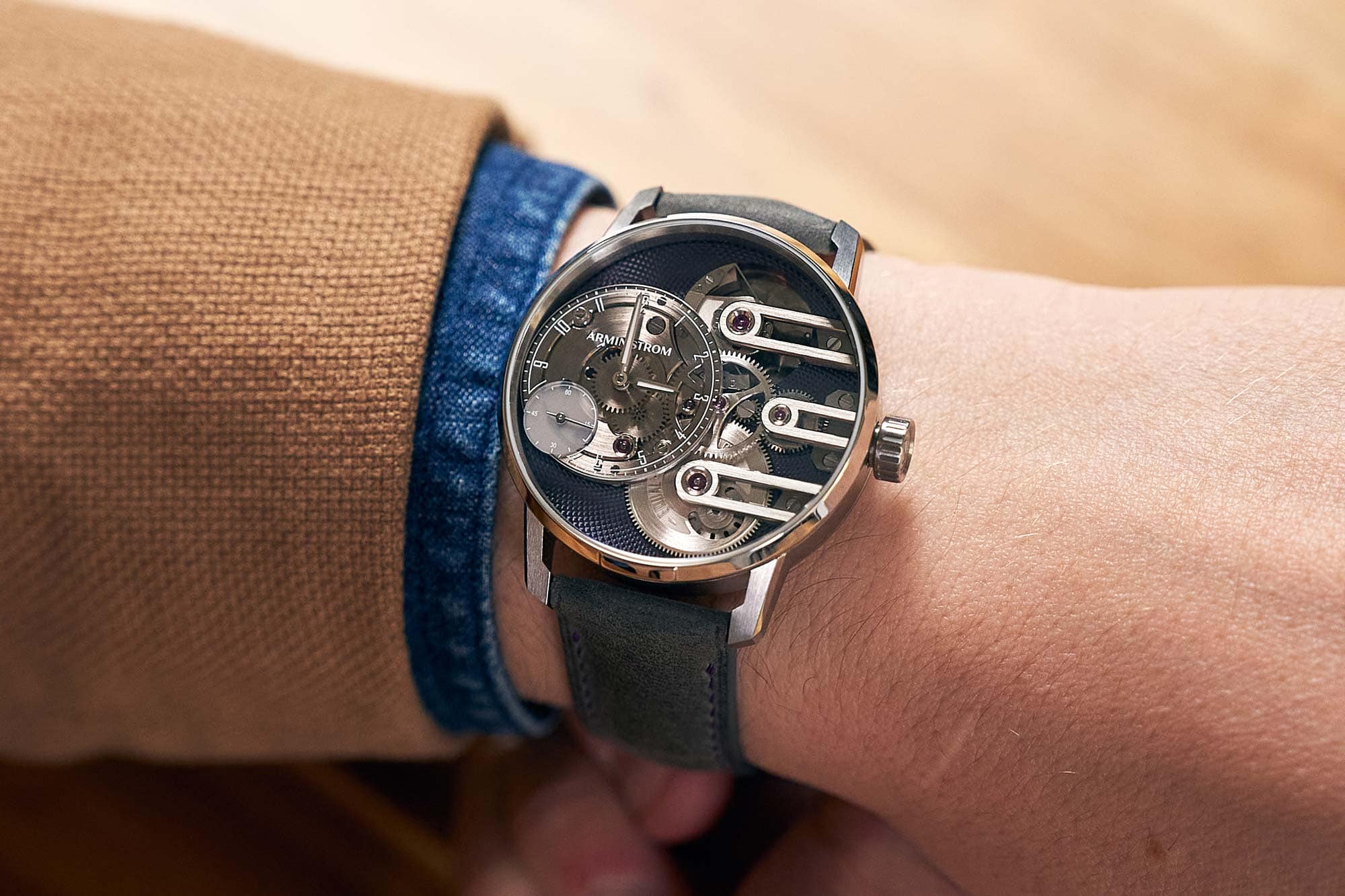
I’m a big fan of Rams’ attitude and his “less, but better approach” is something a lot of designers could really learn from in 2024.
That’s the reason why I drive an old Land Rover Defender; it is exactly the way an SUV should look. It was built with a purpose and it’s as simple as it gets, but that’s also why the design has endured so long. It’s why the Porsche 911 is one of the best examples of good design; the identity is deeply defined. When it comes to things like Ferraris, the Italians were always more emotional in their designs. So if they want to do a fancy car, they do a fancy car, but eventually the only thing that really represents the brand on their cars is the logo. Of course they are all sports cars, but it’s very difficult to find the brand identity in a modern Ferrari when you put it next to an old one.
Armin Strom very specifically identifies as Swiss-German watchmakers and are proud of being part of that tradition. For the uninitiated, can you explain what the hallmarks of Swiss-German watchmaking are relative to the rest of Swiss watchmaking?
I think all the Swiss watchmaking traditions are all very similar to each other. I think ultimately, we all share the same mentality, but there are also nuanced differences. I think for us as a Swiss-German brand, the engineering is very important and while the look of a watch is very important to us, how it’s engineered is extra important to us. We take a bit more time to prove our engineering and to make sure things are right, and we try to understand engineering deeply. We try to understand why things happen within a watch and elaborate on that or fix things, but a lot of our French colleagues sometimes just reference the past and work in a tradition, but they never really try to understand the engineering part quite like we do. For our French colleagues, the finishing is often way more important than the engineering side. For Armin Strom, finishing is extremely important and I think we’re on a very high level with our finishing technique, but we also really wish to do things right and improve things from an engineering perspective.
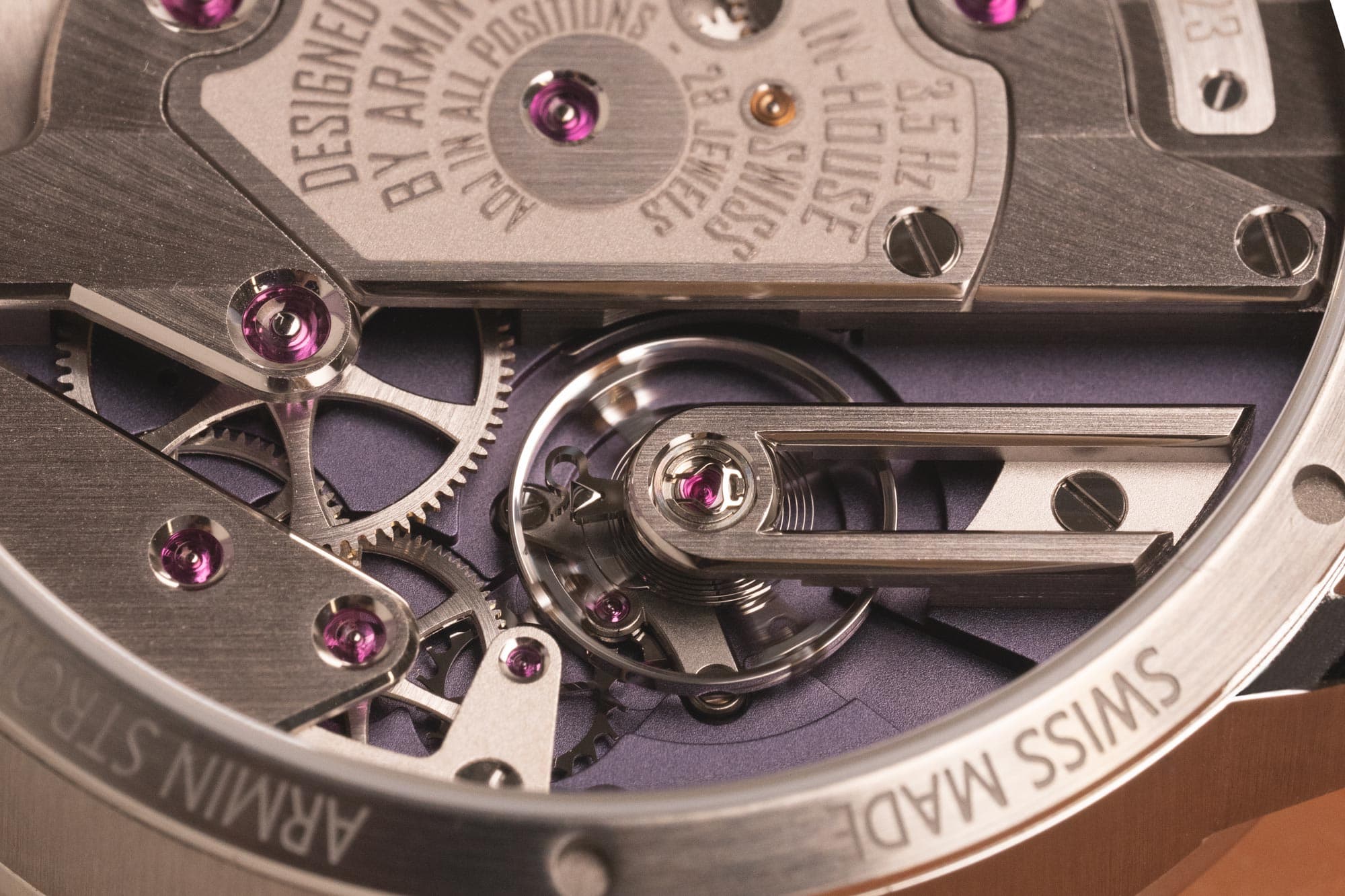
Lange & Söhne is another company that has a similar philosophy, where it’s maybe a bit extreme. They also go very deep into finishing, but are very progressive when it comes to watch engineering.
One of my favorite things Armin Strom has put out is the column wheel date complication on the Orbit. I appreciate the way that complication forces you to interact with the watch and to enjoy the engineering that went into that movement every time you access that function. Could you tell me a little bit about where that idea came from and how long it took to develop it?
It was quite a process! Just after we launched the Gravity Equal Force, Serge and I were sitting together and we asked “What’s next?” I’m a big fan of ceramic bezel watches and sports watches with metal bracelets, so I said ‘Let’s do a diver or a GMT’ and Serge said “Oh, come on! A diver? There are so many dive watches out there.” I said, “But the look is very cool, so let’s try to reinvent a diver’s watch.” Serge still said “No, no, we need, we need it to have a date. We need to have a date built on the Gravity Equal Force movement.” I said ‘No, date complications are boring.’ I never set them and it drives me crazy! Serge said “How can you say that? The date is the second most important information you can have on a watch and I use it all the time because I have to sign so many documents every day.” We simply couldn’t agree, so we said “Let’s do both and see what we come up with.”
We started to think about a big date function for the off-center dial, but we were struggling with integrating a date complication on the Gravity Equal Force. On the other hand, we did some early drawings with the ceramic bezel and metal bracelet and the watch already looked very cool. We didn’t fully agree on whether or not it should be GMT at that point, and whether or not it should have a turning bezel for the dive timing function. Eventually, we were sitting in a meeting and Serge got a bit angry and said “You know, now you’ve pushed so hard this sports watch concept – but we never fully agreed that it needed to be a sports watch. I still strongly believe that it needs a date function.” I said ‘Why not combine both?’
Everybody said “What do you mean?” So I explained we could just print the date on the ceramic bezel and give the bezel a new function. So we went from a turning dive bezel to a fixed bezel with a pointer date. Everyone agreed that was a cool approach, but we still had the issue that if a watch has a pointer date, but you never set the date – like I do on my personal watches – that would look especially weird as the pointer date really pushes the date function in your face. I started to think about how we could solve that problem, and I’m a big fan of chronographs, so I started to wonder why we couldn’t have a zero position that brings back the date hand every time like a chronograph’s flyback. So that design came from us agreeing on one watch and the on/off date function was born from that battle. Both Serge and I do wear that watch now and both of us have fun with it. I only use the zero position on mine, though.
You and Serge have known each other since you were children. Could you tell me a little bit about your working relationship and how it’s evolved and changed over the years?
We have a very, very good relationship. We’ve never had a real argument since we’ve known each other, but since we’ve worked together, we rarely spend time together outside of business. That maybe has something to do with why our working relationship is successful. So if it comes to doing things with friends and or our families, we try really hard to keep those things separate from business.
What’s next for Armin Strom?
I still think we are at the very beginning with the Resonance line. The first one we did was adding a minute repeater to the Resonance, but there are definitely more complications to add, especially those that struggle with with with energy issues – like a chronograph or a perpetual calendar – where the torque isn’t always strong enough to guarantee that when the date jumps or when the chronograph is on, that there’s enough energy. The fact that we have two synchronized movements in one watch with the Resonance means we can really dive deep into new territory when it comes to movement complications.
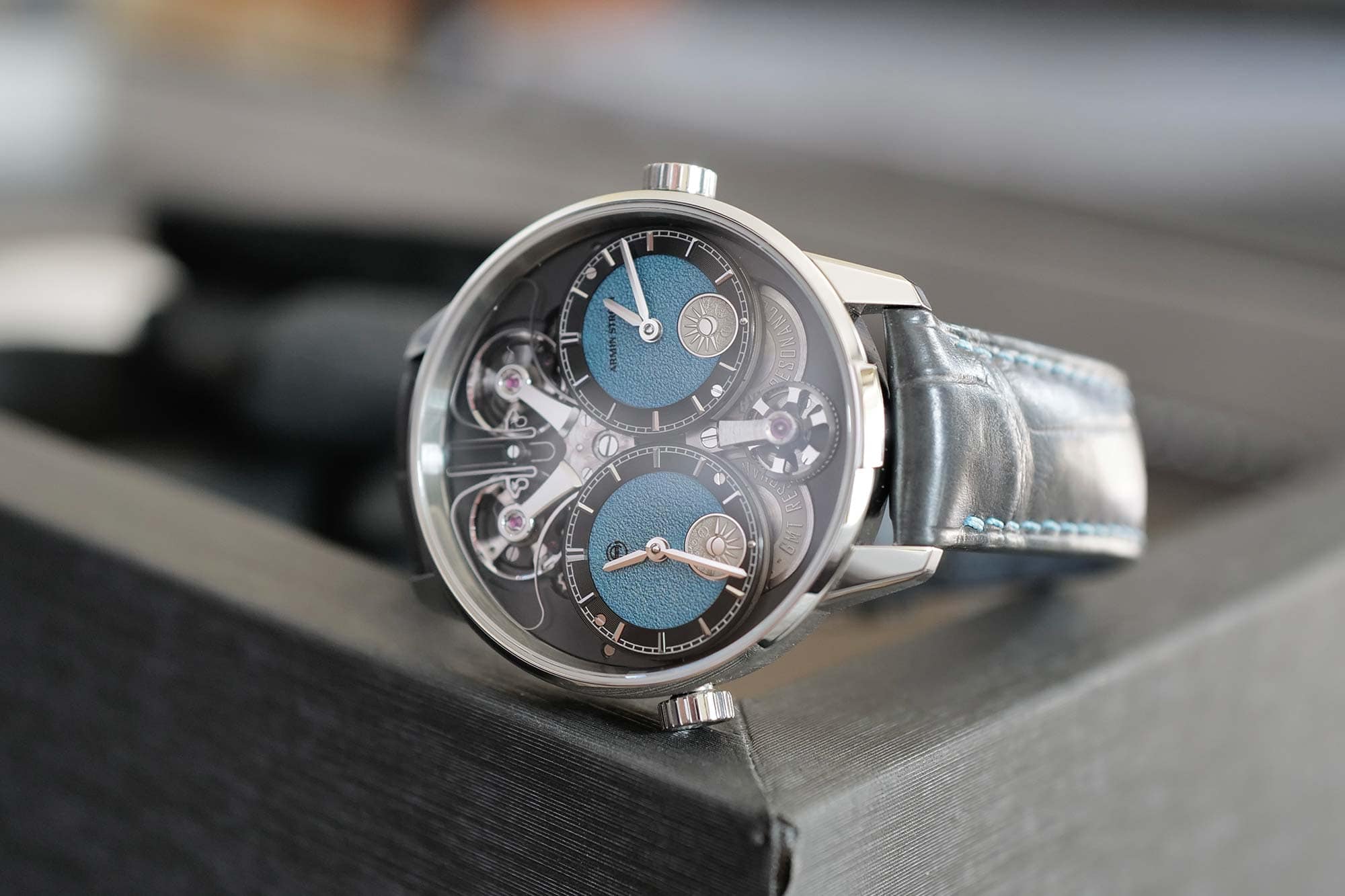
The big piece on the horizon is our 15th anniversary piece, which will be launched during Geneva Watch Days in August. It will be a new watch in the Resonance collection and it is a complete redesign of the Resonance movement – a downsizing of the Resonance with a completely new dial set up. It’s not a downsizing of the Mirror Force Resonance, however, it’s really another Resonance model altogether in a smaller, thin case which will be a very stunning piece.
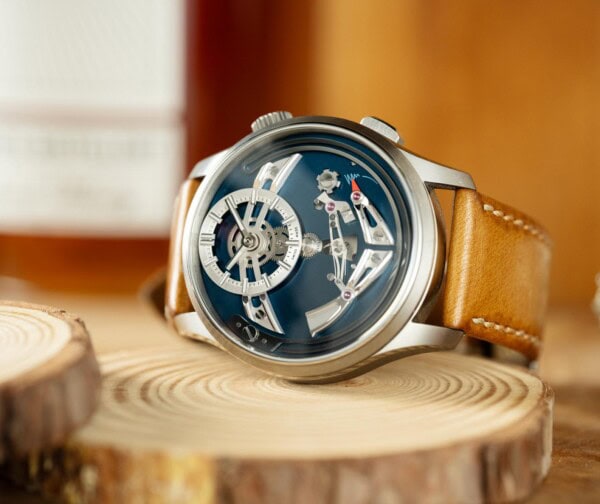



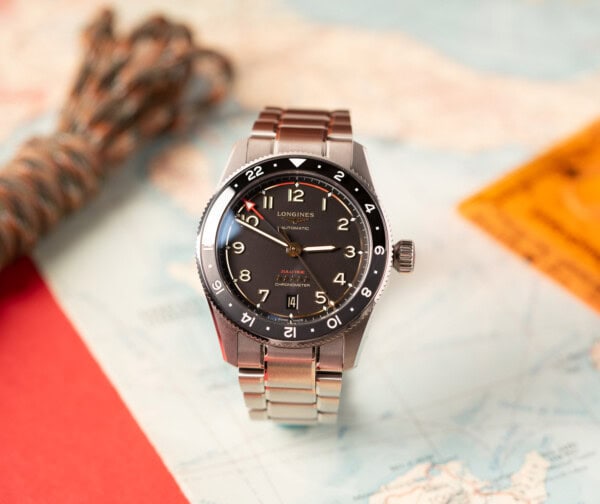

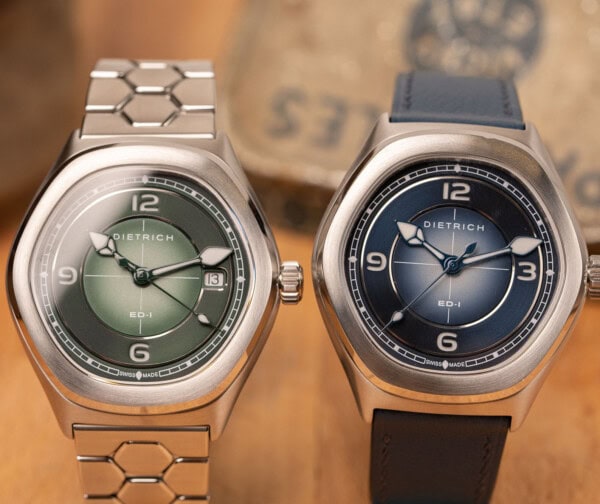


 Featured Videos
Featured Videos






